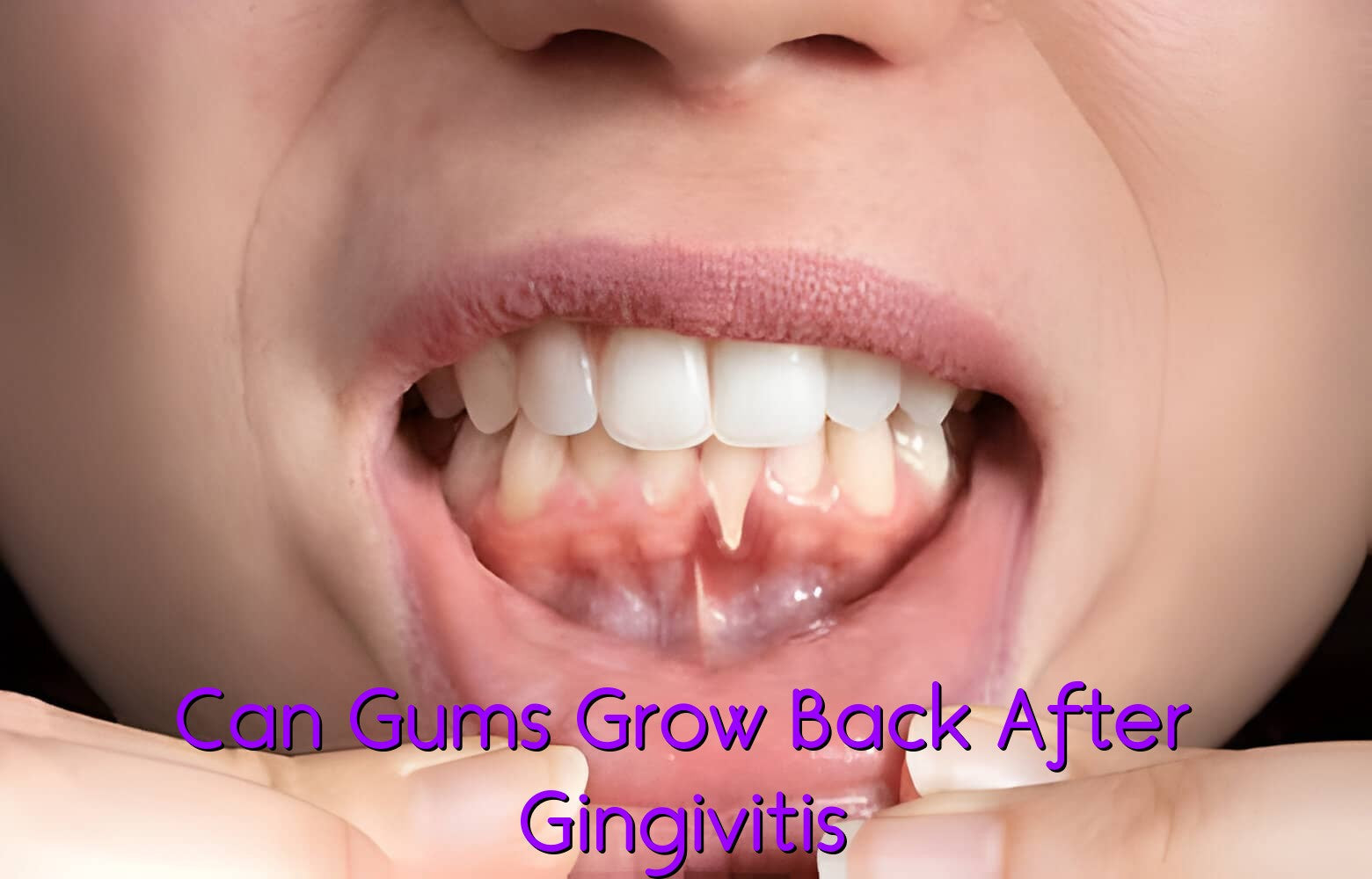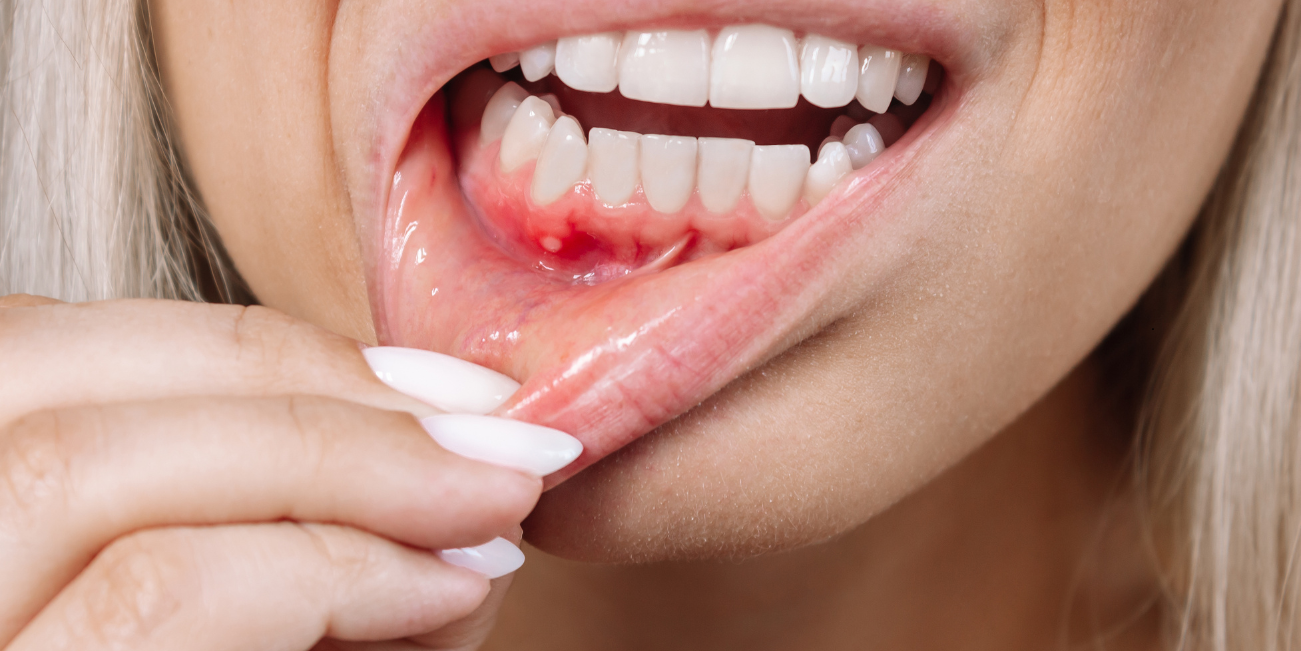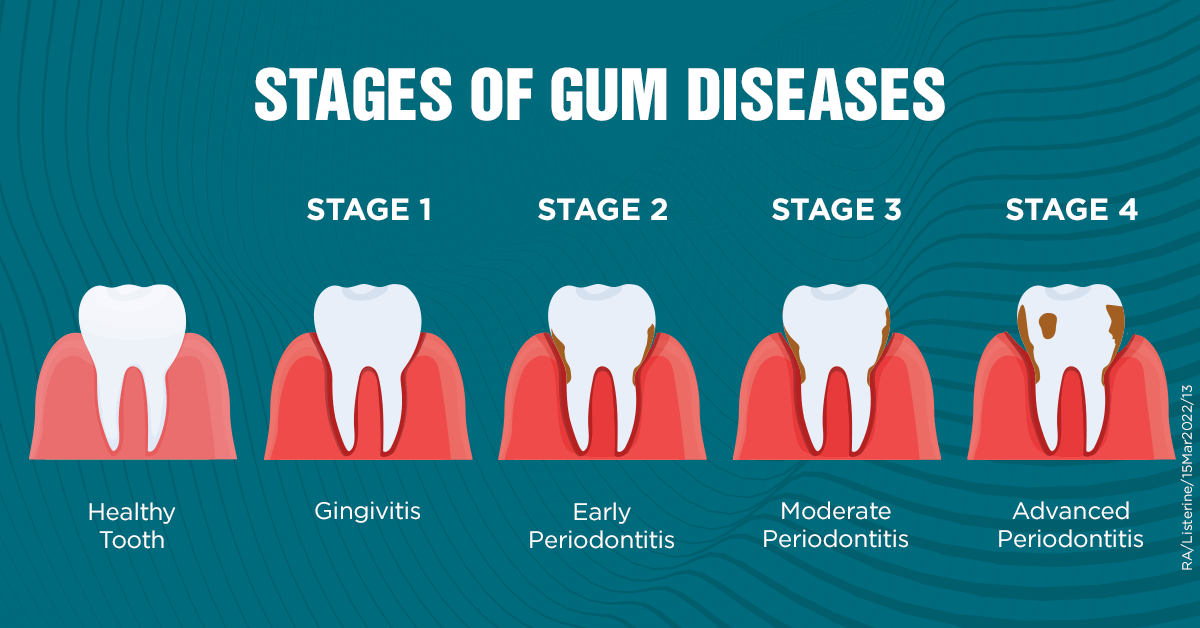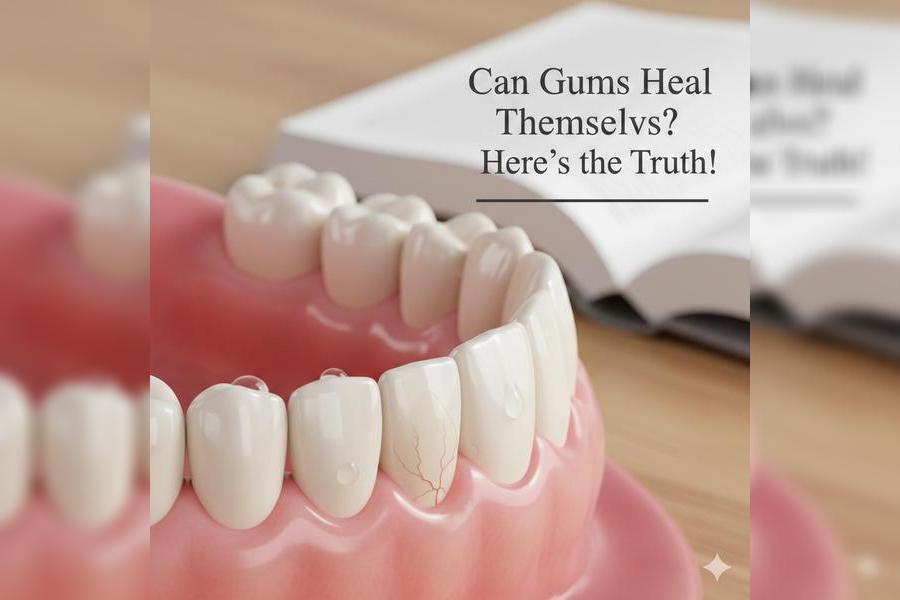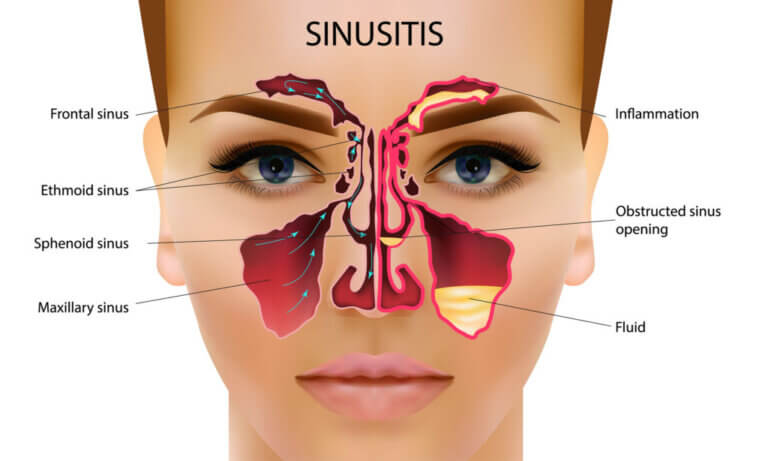Can Gums Grow Back After Gingivitis? That’s something a lot of people start wondering once they notice their gums aren’t looking quite right; maybe they’re puffy, sore, or even starting to recede a little. Gingivitis is often the quiet beginning of gum trouble, and it doesn’t always come with major red flags. But once it’s there, the big question is: can you actually undo the damage?
When gums begin to pull away from the teeth, it’s easy to panic and assume it’s all downhill from there. But not all gum changes are permanent. Some can be reversed - if you catch things early enough. So, can gums grow back after gingivitis? That’s what this article is here to explore.
We’ll walk through what gingivitis does to your gums, what’s fixable, and what isn’t. You’ll also get a clear idea of what steps you can take right now to support healing and protect your gums long-term. Because when it comes to gum health, how soon you act matters more than you might think.
Everything You Need to Know About Gingivitis
Gingivitis is the earliest warning sign that your gums aren’t happy, and it’s more common than you think. It starts with mild inflammation in the gum area (specifically the gingiva, the part that hugs the base of your teeth), and while it may seem harmless at first, it’s your mouth’s way of telling you something needs to change.
The root cause? Bacterial plaque. That soft, sticky film that builds up on your teeth every day? If you don’t brush and floss it away, it hardens into tartar, which only your dentist can remove. As plaque builds up, the bacteria release toxins that irritate your gums. The result is inflammation, and that's when gingivitis steps in.
Know the Early Signs Before Things Escalate
It’s surprisingly easy to overlook gingivitis. A little gum bleeding while brushing or some minor tenderness might not seem like a big deal, but they are. Here’s what to watch out for:
- Red, swollen, or tender gums.
- Bleeding when brushing or flossing.
- Constant bad breath (even after brushing).
- Gums pulling back from your teeth.
- Subtle shifts in your bite or how your teeth fit together.
Why Catching It Early Matters
The real danger of gingivitis lies in what happens if you ignore it. Left unchecked, it can develop into periodontitis; a more severe form of gum disease that attacks the bone and connective tissues holding your teeth in place. At that point, the damage isn’t just uncomfortable; it’s permanent.
This is why the question “can gums grow back after gingivitis” becomes so important. Because while the later stages of gum disease lead to irreversible damage, gingivitis itself is reversible. That’s the silver lining.
Reversing Gingivitis: What’s Possible
The moment you improve your oral hygiene - brushing, flossing, and scheduling cleanings, you’re already taking the right steps. Since gingivitis only affects the soft tissue and not the bone, your gums can return to their healthy state: pink, firm, and no longer bleeding when you floss.
But it doesn’t happen overnight. It takes consistency, regular dental visits, and making oral care a priority again. The earlier you catch it, the better your odds of full recovery.
Bottom line? Gingivitis isn’t the end of the world - but it is your wake-up call. Pay attention to the signs, step up your oral care, and give your gums the best chance to bounce back before things go too far.
Can Gums Grow Back After Gingivitis? Know the Truth!
So, can gums grow back after gingivitis? It’s a fair question, and the answer isn’t as simple as a straight yes or no. It depends on what you actually mean by “grow back.” If you're hoping for magically regenerated gum tissue after some serious recession, that’s not exactly how it works.
But if you're talking about reversing inflammation and getting your gum health back on track, then yes..there’s a lot of good news.
What Really Happens When Gingivitis Starts to Heal
Once you treat gingivitis properly, your gums won’t “grow back” in the way lost tissue regrows. Instead, the inflammation starts to go down. That means swelling fades, bleeding stops, and your gums slowly return to that firm, pink, healthy look. What you’re seeing isn’t new tissue - it’s your existing gum tissue recovering after the irritation is under control.
That’s because gingivitis mainly targets soft tissue and doesn’t (yet) mess with the deeper structures like bone. So once you eliminate the bacteria causing the inflammation and stick to consistent oral hygiene, your gums can bounce back.

How Long Does It Take for Gums to Heal?
Most people notice small improvements in about a week or two after stepping up their oral care. Full recovery? That can take anywhere from two to four weeks, depending on how bad things were to begin with, and on a few other factors too:
- Your overall health
- If you smoke (that’ll slow things down)
- What your diet looks like
- How stressed you are
- Your individual genetics
The Limits: When Gums Don’t Fully Come Back
Here’s where it gets real: once gingivitis has gone untreated for too long and turns into periodontitis, the game changes. At that point, the damage can include deep gum recession and even bone loss. And no, those changes won’t reverse themselves with just brushing and flossing.
So if your gum line has visibly pulled back or you’re seeing larger gaps between your teeth, you might be dealing with long-term changes. That’s why catching gingivitis early makes such a huge difference.
Why Professional Cleanings Matter
You can’t DIY your way out of tartar. Once plaque hardens, it needs to be removed by a dentist or dental hygienist using special tools. This is where professional cleanings come in - they clear out the gunk that’s keeping your gums inflamed in the first place.
Procedures like scaling and root planing go below the gum line to get rid of the bacteria and toxins causing all the issues. Once the area is clean, your gums have a real chance to heal properly.
What You Can Do to Help Your Gums Heal
Aside from brushing and flossing like your dentist told you (yes, every day), a few lifestyle tweaks can make a big difference in how well your gums recover:
- Eat well: Vitamin C supports gum healing, vitamin D helps keep your immune system strong, and omega-3s help fight inflammation.
- Drink more water: Staying hydrated boosts saliva production, which helps clean your mouth naturally.
- Manage stress: High stress weakens your immune system, making it harder to fight off infections like gingivitis.
The bottom line? Healing from gingivitis is absolutely possible, but it takes a mix of good hygiene, professional care, and paying attention to what your body needs. If you’ve caught it early and committed to the right steps, your gums can get back to a healthy state - no surgery or scary stuff required.
The Anatomy of Healthy Gums Vs. Gingivitis-Affected Gums
Understanding the structural differences between healthy and diseased gums provides valuable insight into whether gums can grow back after gingivitis and what recovery actually means.

Healthy Gum Characteristics
Healthy gums exhibit several distinctive features
- Firm, pink tissue that doesn't bleed during normal brushing
- Tight attachment to teeth with no gaps or pockets
- Smooth, stippled texture similar to an orange peel
- Consistent color without red or inflamed areas
- No swelling or tenderness to touch
Changes During Gingivitis
When gingivitis develops, the gum tissue undergoes several changes:
Inflammatory Response: The immune system responds to bacterial toxins by increasing blood flow to the affected area, causing redness and swelling.
Tissue Softening: Healthy, firm gum tissue becomes soft and puffy due to fluid accumulation and inflammatory processes.
Bleeding Tendency: Inflamed blood vessels become fragile and prone to bleeding during routine oral care activities.
Color Changes: The natural pink color deepens to red or purple due to increased blood flow and inflammation.
The Recovery Process
When considering whether gums can grow back after gingivitis, it's important to understand that recovery involves returning these tissues to their healthy state rather than regenerating new tissue. As inflammation subsides:
- Swelling reduces, allowing gums to regain their firm texture
- Blood vessel integrity improves, eliminating bleeding
- Natural pink coloration returns
- Tissue attachment to teeth strengthens
This healing process demonstrates that while "growing back" might not be the most accurate term, gums can certainly recover their health and function after gingivitis treatment.
Treatment Options: Professional vs. At-Home Care
Successfully addressing gingivitis requires a multi-faceted approach combining professional dental care with consistent at-home oral hygiene. Understanding your options helps answer the question of whether gums can grow back after gingivitis.
Professional Dental Treatments
Scaling and Root Planing: This deep cleaning procedure removes plaque and tartar from above and below the gum line. Dental hygienists use specialized instruments to clean tooth surfaces and smooth root surfaces, eliminating bacterial hideouts.
Antibiotic Therapy: In some cases, dentists may prescribe antibiotics to control bacterial infection. These can be systemic (oral medications) or local (applied directly to gum pockets).
Laser Therapy: Advanced practices may use laser treatment to remove infected tissue and bacteria while promoting healing. This minimally invasive option can be particularly effective for stubborn cases.
At-Home Care Strategies
Proper Brushing Technique: Use a soft-bristled toothbrush with fluoride toothpaste, brushing for at least two minutes twice daily. Focus on the gum line where plaque accumulates most heavily.
Daily Flossing: Remove plaque and food particles from between teeth where toothbrushes can't reach. Proper flossing technique involves gentle up-and-down motions rather than aggressive sawing.
Antimicrobial Rinses: Therapeutic mouthwashes containing ingredients like chlorhexidine or cetylpyridinium chloride can help reduce bacterial load and inflammation.
Natural Treatment Approaches
Many people seeking to understand whether gums can grow back after gingivitis are interested in natural treatment options. While these shouldn't replace professional care, they can provide valuable support:
Oil Pulling: Swishing coconut or sesame oil in your mouth for 10-15 minutes may help reduce harmful bacteria and inflammation.
Herbal Remedies: Certain herbs like neem, clove, and turmeric possess antimicrobial and anti-inflammatory properties that may support gum health.
Saltwater Rinses: Simple saline solutions can help reduce inflammation and promote healing while being gentle on sensitive tissues.
Specialized Natural Solutions
For those seeking comprehensive natural support, specialized formulations combining multiple beneficial ingredients can be particularly effective. Products containing omega-3 and omega-9 oils infused with neem and clove essential oils offer powerful antimicrobial and anti-inflammatory benefits. These natural compounds work synergistically to address the root causes of gingivitis while supporting the body's healing processes.
Such natural gum solutions can be especially beneficial for individuals experiencing bleeding gums, tooth sensitivity, or discomfort from hot and cold temperatures, providing gentle yet effective relief alongside conventional treatments.
Lifestyle Factors That Influence Gum Recovery
When exploring whether gums can grow back after gingivitis, it's essential to consider how lifestyle factors significantly impact the healing process. Your daily habits and choices can either accelerate recovery or hinder your gums' ability to return to health.
Nutrition and Gum Health
Vitamin C: This essential nutrient plays a crucial role in collagen synthesis, which is vital for healthy gum tissue. Deficiency can lead to bleeding gums and delayed healing. Include citrus fruits, berries, and leafy greens in your diet.
Omega-3 Fatty Acids: These anti-inflammatory compounds help reduce gum inflammation and support the healing process. Sources include fatty fish, walnuts, and flaxseeds.
Antioxidants: Vitamins A and E, along with other antioxidants, help combat oxidative stress that can damage gum tissues and impede recovery.
Smoking and Gum Recovery
Smoking significantly impairs blood flow to the gums, reducing oxygen and nutrient delivery to healing tissues. This habit also suppresses immune function, making it harder for your body to fight off the bacterial infections that cause gingivitis. Quitting smoking dramatically improves your chances of successful gum recovery.
Stress Management
Chronic stress elevates cortisol levels, which can suppress immune function and increase inflammation throughout the body, including in the gums. Stress also often leads to poor oral hygiene habits and teeth grinding, both of which can worsen gingivitis.
Sleep Quality
Adequate sleep is essential for immune system function and tissue repair. Poor sleep quality can impair your body's ability to heal and fight off infections, potentially slowing the recovery process.
Hydration
Proper hydration supports saliva production, which naturally cleanses the mouth and helps maintain a healthy oral environment. Dehydration can lead to dry mouth, creating conditions that favor bacterial growth.
Regular Exercise
Moderate exercise improves circulation, including blood flow to the gums, and supports immune system function. However, avoid intense exercise immediately after dental procedures to prevent bleeding.
Understanding these lifestyle factors provides a comprehensive answer to whether gums can grow back after gingivitis - they can, but your daily choices significantly influence the speed and success of recovery.
When to Seek Professional Help
Recognizing when professional intervention is necessary is crucial for anyone wondering whether gums can grow back after gingivitis. While early-stage gingivitis often responds well to improved home care, certain symptoms warrant immediate professional attention.
Red Flag Symptoms
Persistent Bleeding: If your gums continue bleeding after 2-3 weeks of improved oral hygiene, professional evaluation is essential.
Severe Swelling: Significant gum swelling that doesn't improve with home care may indicate more serious infection.
Pus or Discharge: Any pus around the gums suggests bacterial infection requiring professional treatment.
Loose Teeth: Tooth mobility indicates potential progression to periodontitis, which requires immediate professional intervention.
Progressive Warning Signs
Receding Gums: If your gums appear to be pulling away from your teeth, creating longer-looking teeth or exposed roots, seek professional care promptly.
Persistent Bad Breath: Chronic halitosis despite good oral hygiene may indicate underlying gum disease.
Pain or Discomfort: Significant pain or discomfort in your gums, especially when eating or brushing, warrants professional evaluation.
Regular Monitoring
Even if you're successfully managing gingivitis at home, regular professional monitoring ensures that your gums are truly recovering. Dental professionals can detect early signs of progression that you might miss and adjust treatment plans accordingly.
Professional care is essential for definitively answering whether gums can grow back after gingivitis in your specific case, as individual factors can significantly influence recovery outcomes.
Gum Disease Stages and Recovery Potential
Understanding the different stages of gum disease is crucial for determining whether gums can grow back after gingivitis and what level of recovery is possible at each stage.
Stage 1: Gingivitis (Fully Reversible)
Characteristics:
- Inflammation limited to gum tissue
- No bone or connective tissue damage
- Bleeding, swelling, and redness
- No permanent structural changes
Recovery Potential: Complete recovery is possible with proper treatment. The gums can return to their healthy state, answering the question of whether gums can grow back after gingivitis with a definitive yes for this stage.
Treatment Timeline: Most people see improvement within 1-2 weeks of proper care, with complete healing typically occurring within 3-4 weeks.
Stage 2: Early Periodontitis (Partially Reversible)
Characteristics:
- Bacterial infection spreads below the gum line
- Early bone and connective tissue damage
- Formation of periodontal pockets
- Some irreversible damage occurs
Recovery Potential: While the infection can be controlled and further damage prevented, some structural damage may be permanent. Professional treatment is essential at this stage.
Stage 3: Moderate Periodontitis (Limited Reversibility)
Characteristics:
- Significant bone and tissue loss
- Deeper periodontal pockets
- Possible tooth mobility
- Extensive structural damage
Recovery Potential: Disease progression can be halted, but significant regeneration is unlikely without advanced treatments like bone grafts or tissue regeneration procedures.
Stage 4: Advanced Periodontitis (Minimal Reversibility)
Characteristics:
- Severe bone and tissue loss
- Tooth mobility and potential tooth loss
- Deep periodontal pockets
- Extensive structural damage
Recovery Potential: Focus shifts to preventing further damage and maintaining existing teeth. Some teeth may require extraction.
Recovery Timeline Comparison
|
Stage |
Recovery Time |
Potential Outcome |
|
Gingivitis |
2-4 weeks |
Complete healing |
|
Early Periodontitis |
3-6 months |
Disease control, some healing |
|
Moderate Periodontitis |
6-12 months |
Disease stabilization |
|
Advanced Periodontitis |
Ongoing management |
Damage limitation |
The Importance of Early Intervention
This progression chart clearly demonstrates why early treatment is crucial. The question of whether gums can grow back after gingivitis has the most positive answer when addressed at the earliest stage. Each progression beyond gingivitis reduces the potential for complete recovery and increases the complexity of required treatments.
Frequently Asked Questions (FAQ)
Q1: Can gums grow back after gingivitis naturally?
Yes, gums can recover naturally from gingivitis through improved oral hygiene and healthy lifestyle choices. However, "growing back" means returning to health rather than regenerating lost tissue. Natural healing occurs when inflammation subsides and healthy tissue function is restored.
Q2: Do gums grow back after gingivitis if I've had it multiple times?
Yes, gums can recover from repeated episodes of gingivitis, but each recurrence may cause additional damage. Frequent episodes increase the risk of progression to more serious periodontal disease, making prevention crucial.
Q3: Can receded gums from gingivitis grow back completely?
Minor gum recession from gingivitis may improve with treatment, but severely receded gums typically cannot return to their original position. The focus should be on preventing further recession and maintaining gum health.
Q4: Are there any natural products that help gums grow back after gingivitis?
While gums don't technically "grow back," natural products can support healing and recovery. Ingredients like omega-3 and omega-9 oils, neem, and clove essential oils offer antimicrobial and anti-inflammatory benefits that support gum health recovery.
Q5: How can I tell if my gums are growing back after gingivitis treatment?
Signs of healing include reduced bleeding, decreased swelling, return of normal pink color, and firmer tissue texture. Your dentist can provide the most accurate assessment of your recovery progress.
Conclusion
The question "can gums grow back after gingivitis" has a hopeful answer: while gums may not regenerate lost tissue, they can certainly return to health with proper care and treatment. Understanding that gingivitis is a reversible condition empowers you to take control of your oral health and prevent progression to more serious periodontal disease.
If you're currently dealing with bleeding gums, sensitivity, or other signs of gingivitis, don't wait for symptoms to worsen. Start implementing better oral hygiene practices today. The Goodbye Company’s gum disease solution can help in this regard. It’s a solution meant to treat and prevent gingivitis. and consult with a dental professional to develop a treatment plan tailored to your specific needs.


